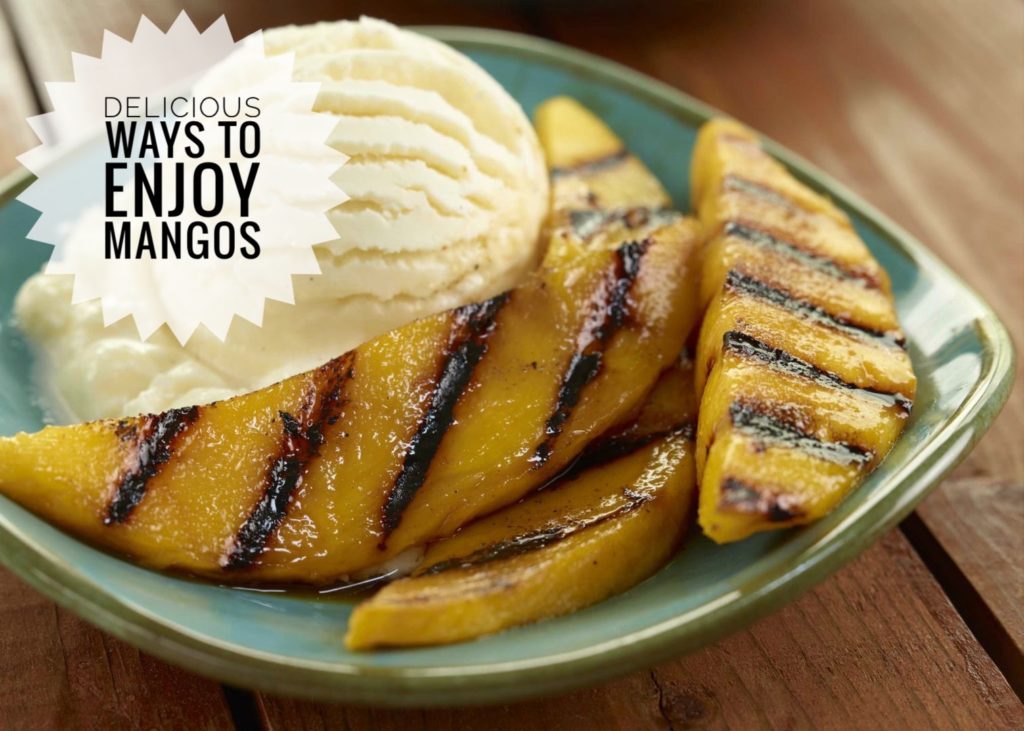Looking for a taste of the tropics? A vitamin C rich mango fruit may be just what you need. Learn all about what this sweet nutrient-rich fruit has to offer.

Mangos win the title as the most popular fruit worldwide.And, for good reason! They have a unique flavor and fragrance compared to other fruits. Even among themselves, there are many varieties ranging from sweet and creamy to rich and spicy.
Most of the Mango fruit sold in the US come from Mexico, Peru, Ecuador, Brazil, Guatemala and Haiti. Though there are more, six varieties make up the most common mango varieties in the US marketplace. Even if you tried one type of mango and didn’t care for it, don’t give up completely; their nutritional benefits are worth a second chance. A different variety or a different preparation technique may be all that you need.
The Nutrition and Health Benefits in Mangos
Study after study shows that taste is the #1 determinant of why we eat what we eat. It’s an added bonus when foods that taste good are also good for us. That’s the case with mango fruit. The proof is in the pigment. You just have to cut the fruit open to see it’s filled with phytochemicals. Carotenoids, known for their antioxidant qualities, give this fruit its yellow-orange color. These antioxidants are the nutrients that protect and repair cells from free-radical damage, and work to boost our immune system to keep us feeling fantastic. Who wouldn’t want that?

While the nutritional content of different mango varieties vary, they all contain important nutrients. In fact, a study comparing the nutritional value of five different mango varieties showed that all five varieties met the criteria as an “excellent source” of vitamin A and C. The Mexican grown Ataulfo variety ranked highest in both vitamin C (ascorbic acid) and beta-carotene.
Mangos also contain a variety of phenolics like ellagic acid and gallotannin – compounds that serve as the base for antioxidants. One phenolic specific to mangoes is mangiferin. This compound has been shown to possess anti-inflammatory and anti-cancer qualities that helps the support the body’s immune system.
There is currently a range of research in human subjects studying mangos’ effect on inflammatory bowel disease, glucose response on pre-diabetic subjects, and the health benefits of mango supplementation as it relates to weight loss, body composition and inflammation.
On average, one cup of cubed mango provides:
-
- 100 calories
- 100% of your daily Vitamin C needs
- 35% of your daily Vitamin A needs
- 20% of your daily folate needs
- 10% of your daily fiber needs
- 10% of your daily Vitamin B6 and Copper needs
Choosing, Caring and Preparing your Mango
If mango isn’t one of the typical fruits you eat, you may wonder how to choose one and then how to cut it. The Mango Board has put together a great video on how to select and cut the perfect mango. I encourage you to watch the video here.
Ways to Eat Mango
Not only are mangos juicy and nutritious, their sweet taste pairs perfectly with a variety of foods. Here are six easy ways add more mango to your life.
- Mango tastes great just the way they are. Eat a cup of freshly sliced or diced mango paired with a protein or as dessert after dinner.
- Make mango salsa or chutney to add to fish, chicken or pork dishes
- Make a Mango smoothie.
- Mangos have natural tenderizing properties making them a perfect ingredient for marinades.
- Kabob it! Make cold kabobs by putting 1-2 mango cubes on a toothpick and dip into Greek yogurt for a balanced snack. Or pair mango with your favorite protein for hot kabobs on the grill.
For some very yummy mango recipes visit mango.org
*All photos © 2017 National Mango Board and used by permission of the National Mango Board. All rights reserved.



 Hi, I’m Heather – a registered dietitian, busy mom, consultant, adventure junkie and travel addict who has mastered living healthy on the go. My blog is where I share simple recipes and healthy living tips to help and inspire others to live their best life.
Hi, I’m Heather – a registered dietitian, busy mom, consultant, adventure junkie and travel addict who has mastered living healthy on the go. My blog is where I share simple recipes and healthy living tips to help and inspire others to live their best life.
Nice article on how to enjoy Mangoes.